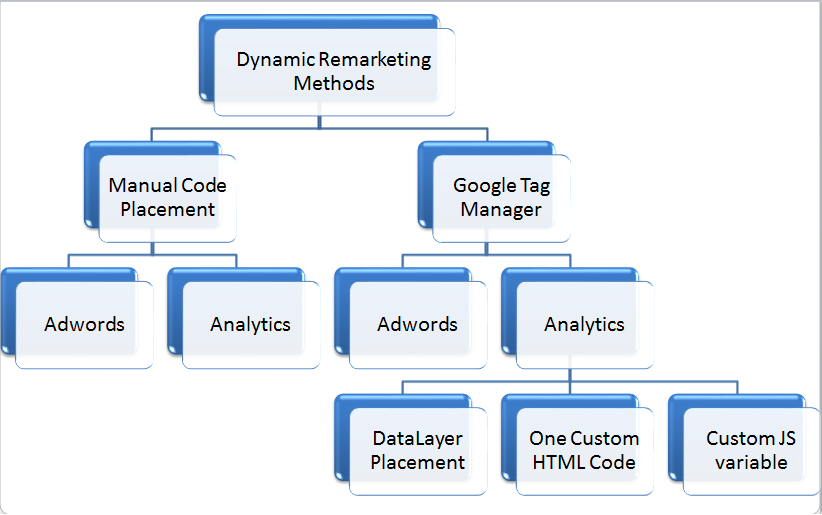How to Leverage Remarketing In Google Analytics for Your Company
How to Leverage Remarketing In Google Analytics for Your Company
Blog Article
Remarketing in Google Analytics: Transforming Site Visitor Information Into Sales
The ability to precisely target audiences based on their habits and choices opens doors to a realm of possibilities, pushing businesses towards lasting growth and profitability. With a thorough analysis of visitor actions and a tailored remarketing approach, companies can navigate the electronic landscape with accuracy and finesse, unwinding the real possibility of their on-line presence.

Benefits of Remarketing in Google Analytics
Remarketing in Google Analytics offers companies the opportunity to reconnect with internet site site visitors that have actually revealed rate of interest in their product and services, thus enhancing brand exposure and conversions. By leveraging this effective tool, companies can stay top-of-mind with potential clients who have actually currently involved with their site. Among the essential advantages of remarketing is the capability to target particular audiences based upon their habits on the website, enabling individualized messaging and tailored advertising projects.
Furthermore, remarketing in Google Analytics can aid businesses boost their conversion rates by re-engaging with visitors who might not have bought or finished a desired action on the site throughout their preliminary see. This targeted method can cause greater conversion prices and ultimately drive even more sales. Additionally, remarketing can additionally aid businesses construct brand name commitment and count on by keeping regular communication with potential customers throughout their buying journey.
Establishing up Remarketing Projects
When initiating remarketing projects in Google Analytics, organizations need to very carefully intend and apply critical targeting strategies to effectively reach their wanted audience. The very first step in establishing up remarketing projects is to define clear purposes. Whether the goal is to boost site conversions, advertise specific items, or increase brand recognition, having a distinct goal will lead the whole campaign strategy.
Following, businesses need to develop audience lists based upon specific criteria such as site site visitors, customers that deserted their buying carts, or those that connected with particular material. These checklists permit targeted messaging tailored per section of the audience, enhancing the opportunities of conversion.

Finally, organizations should establish conversion monitoring to determine the success of their remarketing campaigns accurately. By evaluating the performance information, organizations can maximize their projects for far better outcomes and greater ROI.
Leveraging Target Market Division for Remarketing
Making use of target market segmentation is an important method for improving the effectiveness of remarketing campaigns in Google Analytics (What Is “Remarketing” In Google Analytics?). By separating your site site visitors into unique groups based on their actions, demographics, or interests, you can tailor your remarketing initiatives to target these specific sectors with appropriate ads. Target market division enables you to create more customized and targeted campaigns, boosting the chances of re-engaging site visitors and driving conversions
Segmenting your target market allows you to deliver tailored messaging that reverberates with each group's demands and choices. As an example, you can create different remarketing listings for users that deserted their shopping carts, went to details product web pages, or downloaded and install a particular resource. By comprehending the different inspirations and rate of interests of these sectors, you can craft engaging ad creatives that are more probable to record their interest and motivate them to review your website.
Additionally, target market segmentation also aids you optimize your advertisement spend by concentrating on high-value sectors that are more probable my website to convert - What Is “Remarketing” In Google Analytics?. By analyzing the efficiency of each segment, you can designate your budget more efficiently and make best use of the return on your remarketing financial investment
Analyzing Remarketing Performance Metrics
To efficiently examine the success of remarketing projects in Google Analytics, examining key performance metrics is necessary. Metrics such as click-through rate (CTR), conversion price, price per acquisition (CERTIFIED PUBLIC ACCOUNTANT), and return on ad spend (ROAS) supply beneficial understandings into the effectiveness of your remarketing efforts. CTR indicates the percent of customers that clicked your ad after seeing it, showing the ad's significance and allure to your target market. Conversion price gauges the percent of users that completed a desired action, such as purchasing, after clicking on your ad. CPA helps figure out the cost of obtaining a client via your remarketing project, while ROAS assesses the profits produced for each buck invested in advertising. By evaluating these metrics, you can recognize areas for enhancement, enhance your campaigns, and assign spending plan a lot more successfully to maximize the ROI of your remarketing approaches in Google Analytics.

Finest Practices for Remarketing Success
Building on the structure of evaluating remarketing efficiency metrics, executing ideal practices is vital to attaining success in your remarketing undertakings. Additionally, make sure that your remarketing advertisements are visually enticing and contain engaging phone calls to activity.
Furthermore, regularity topping is vital to protect against ad tiredness. Pestering users with the same ad continuously can lead to inconvenience and decreased performance. Testing different ad positionings, messages, and formats is likewise crucial. A/B testing permits you to determine which strategies generate the most effective results and enhance your projects accordingly. Finally, monitor your projects regularly, evaluate the information, and make data-driven decisions to continually fine-tune your remarketing initiatives for optimal impact.
Verdict
To conclude, remarketing in Google Analytics provides companies the opportunity to take advantage of site visitor information to increase sales and drive conversions. By utilizing audience division, assessing efficiency metrics, and useful content applying finest methods, businesses can customize their remarketing initiatives to target high-value sectors effectively. With engaging ad creatives and conversion monitoring, services can construct brand loyalty and trust fund, inevitably making the most of the influence of their marketing techniques.
With a precise evaluation of site visitor activities and a tailored remarketing strategy, businesses can browse the digital landscape with accuracy and finesse, unraveling the true possibility of their on the internet presence.
One of the crucial advantages of remarketing is the capacity to target certain target markets based on their habits on the site, permitting for personalized messaging and customized advertising imp source projects.
Additionally, remarketing can likewise help companies develop brand name loyalty and depend on by maintaining consistent communication with prospective consumers throughout their purchasing trip.
Metrics such as click-through price (CTR), conversion rate, expense per procurement (CERTIFIED PUBLIC ACCOUNTANT), and return on ad invest (ROAS) supply valuable insights into the effectiveness of your remarketing initiatives. By examining these metrics, you can recognize locations for renovation, maximize your projects, and allocate budget plan a lot more properly to make the most of the ROI of your remarketing strategies in Google Analytics.
Report this page